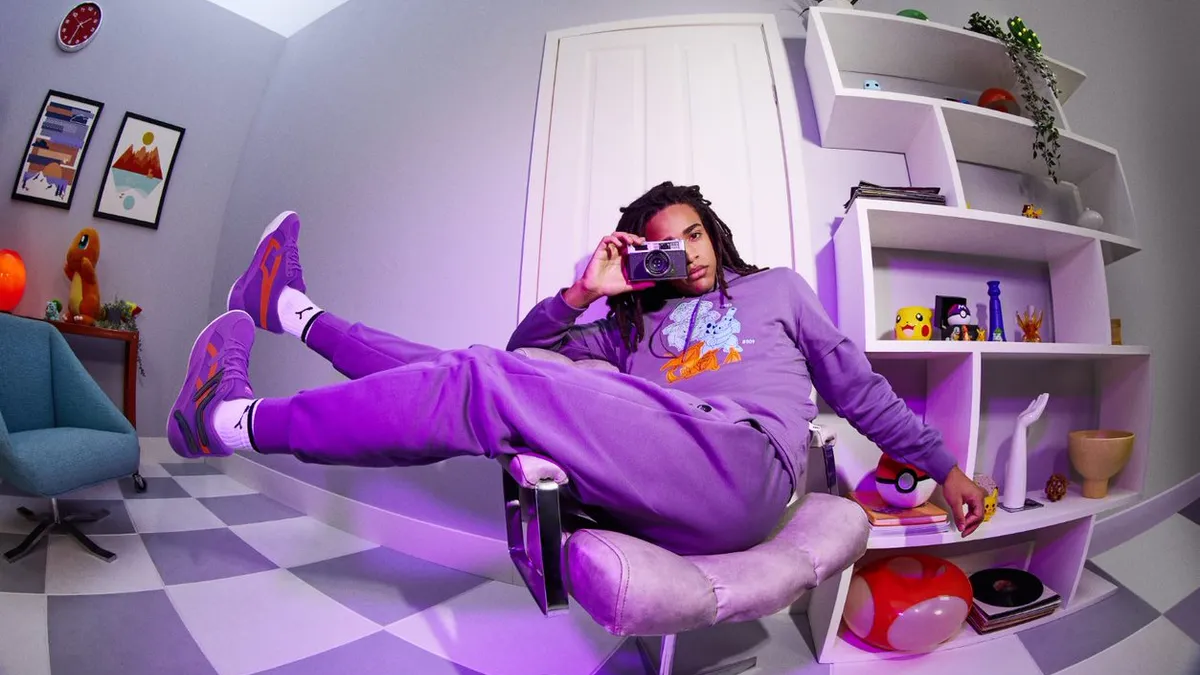Dive Brief:
- Across the U.S., 400 Foot Locker, Kid’s Foot Locker and Champs stores have been turned into Pokemon Go Gyms and PokeStops, where players can interact with each other and in-game creatures for the next six months, according to details shared with Marketing Dive.
- The activation comes out of a partnership between Puma, Foot Locker, Pokemon Co. and Niantic to promote the release of Puma’s Pokemon-themed sneakers and merchandise, including a capsule collection available exclusively at Foot Locker and online through Pokemon.
- The Puma flagship store in New York City also has a Pokemon theme. The tie-in comes as more brands are exploring ways to link virtual and physical worlds using AR technology.
Dive Insight:
It has been a while since businesses clamored to become part of the Pokemon Go phenomenon, but the game — and particularly the Pokemon brand — still has clout. The new tie-up with Foot Locker and Puma underscores the enduring relevancy of mobile gaming and AR technology for retailers and brands looking to engage younger consumers through a mix of physical and digital experiences.
Though it may seem like a flash-in-the-pan phenomenon from the summer of 2016, the game is still going strong six years later. Yes, annual active users have dropped significantly since the game was first released, but the game was downloaded 60 million times in 2020 when people turned to mobile games for entertainment during the pandemic. The game was downloaded 56 million times last year and 23 million times over the first eight months of 2022.
Perhaps more importantly, the game has been responsible for $4.5 billion in revenue for Niantic, with more than $1.8 billion spent on in-app purchases from the Americas over the past six years. The partnership with Puma includes sneakers and other apparel inspired by characters from the entertainment franchise, like Charmander, Pikachu, Bulasaur, Squirtle and Gengar.
The collaboration between Puma and the Pokemon Company, which handles the licensing of the popular characters, could drive those Pokemon-loyalist gamers to 400 retail stores in the United States, including Puma’s flagship store in New York City.
The tie-in comes as more brands are exploring ways to link the virtual and physical worlds using AR technology. Last month, Lucky Charms cereal ran a promo (developed in partnership with Pokemon Go developer Niantic) that encouraged players to find virtual gems that could only be identified through the app. Similarly, Doritos challenged consumers to find real-world triangles that aped the chip’s shape using a Snapchat lens.
AR has also proven particularly useful for consumers to try on apparel, accessories and makeup virtually. Amazon Fashion recently incorporated Snapchat lenses to enable consumers to try on sunglasses virtually, and Sally Hansen earlier this year used AR technology for nail polish trials.
Consumers are warming to the trend. A study from Camera IQ earlier this year found that more than three-quarters of American consumers had used AR in some form and more than half expected to do so in the future. More than half (59%) said they would be more likely to purchase a product they visualized using AR, and 82% said they were more like to accept a brand that used AR to educate them about their products and services.














